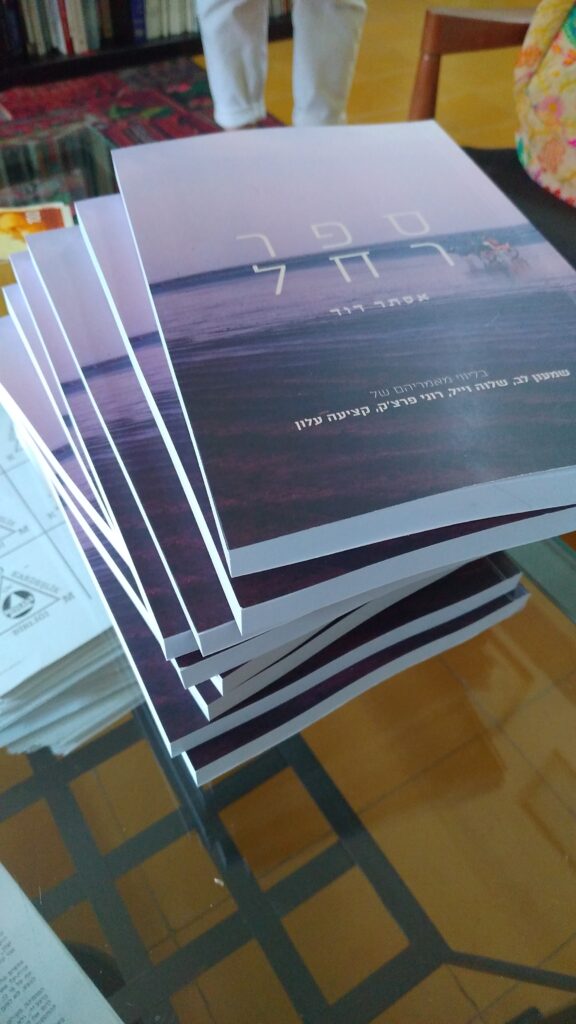As, the year ends, we light candles to celebrate Hanukkah and feast upon fried Samosas or potato Cutlets at the Magen Abraham Synagogue of Ahmedabad, I look back and wonder how our large joint family, which lived together in an old house in the walled city of Ahmedabad, slowly disintegrated. Through the years, many elders left for their heavenly abode and others immigrated to Israel, Canada, England, Australia and U.S.A. In a similar manner, I left Ahmedabad many times, but kept returning and became part of the last few Jews of Ahmedabad, meeting them often and breaking bread together at the Synagogue.
There are 140 Jews in Ahmedabad and we celebrate festivals together and are like one big family. My ancestors lived here for almost five generations and much later in life, I had the responsibility of disposing off their belongings. In this process, I have minimized my own possessions. It pains me; to write that when I gave away the last object from my kitchen, it was one of the hardest moments of my life. I had to, as there was no place for it. It was precious, even if it was a slab of stone. It had the touch of all the women of my family inscribed on it. It was a grinding stone with a pestle, which was always kept on the floor or on the large kitchen platform. All masalas and chutneys were ground on it. The pressure of the human hand on the ingredients was essential to get the right texture to the paste, as ginger, garlic, green chilis or dry red chilis, grated coconut, coriander – cumin seeds and coriander leaves were ground together, so that it could be sauteed with sliced onions frying in a casserole. And, when black pepper curry was made, the ingredients varied and needed special skill at grinding roasted but peeled onions, ginger, garlic and peppercorns.
This elaborate process of grinding masala needed hands of steel and a continuous semi-circular-hand-movement to prepare a smooth paste. It was an intricate part of cooking curries and making chutneys. This chore was assigned to the cook or her help and if the women were not satisfied with the end-result, often they hitched up their saris, sat down on a wooden stool and ground the paste themselves or asked the maid to place the stone on the platform, to avoid backaches.
Mid-morning; as lunch and dinner preparations started, it was not uncommon to see the women standing over the maid to check the paste; as she sat hunched on the floor grinding masala.
Our grinding stone was more than a hundred years old and had chisel marks on the surface, so that the ingredients could be ground into a smooth paste. But, it was no longer rough, as stone artisans were not easily available to roughen the surface.
The stone was a precious memento of the past, but I could no longer accommodate it in my apartment. I even tried to use it as a pedestal to keep some of my pot-plants. I was heartbroken and gave it to our old driver, as he said; his wife needed a grinding stone. So, it went to their home in the shanty town opposite our housing society. Soon after, I bought an electric mixer-grinder to process masalas in a few minutes, but I was never satisfied. I was sure the masala never released the flavors, which it used to from the grinding stone…when stone turned to water…
I have a fascination for grinding stones, which remind me of the Stone Age or an Egyptian sculpture of a woman grinding grain. Grinding stones come in all shapes and sizes. Ours was about fourteen inches by ten inches in length and breadth, while the pestle was shaped like a cylindrical stone. This size was just right to hold it in both hands and grind the paste.
Often, I become nostalgic about grinding stones, as they remind me of the women of my family, as they made green or red masala paste for a curry and checked its consistency by rubbing a little paste between their fingers, before it was cooked in coconut milk, which was sometimes mixed with Tamarind extract or strands of fragrant Saffron dissolved in a tiny bowl of water. It had to have the right consistency without a speck of the elements used to make it.
Once, the casserole of curry was put on the stove; pieces of chicken, fish or meat were added and cooked, as strong flavours filled the house with a delicious aroma.
Sometimes, even if; I did not cook green, red or black pepper curry, which were almost always served with coconut rice, their nostalgic fragrances wafted towards me and touched the inner chords of my being, as they transformed into a beautiful aesthetic experience, which stayed within me….
